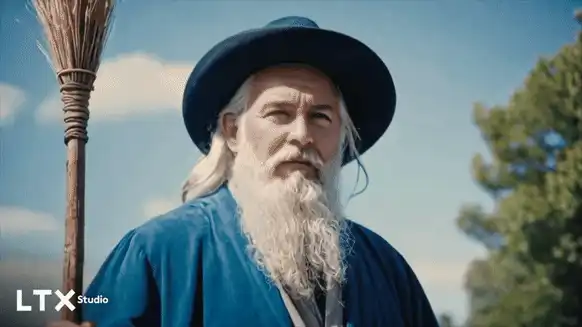LTX Studio is a new generative AI video platform that allows creators to create entire productions from a single prompt. In a demo of this tool, we saw a full production, including clips, sound, and characters, appear in seconds.
In less than a year, generative AI video has quickly gone from barely watchable short clips to nearly production-ready. We get shots that are so close to reality that it is hard to tell fact from fiction, but in most cases they are still brief shots of three or four seconds with no sound.
While there are numerous generation tools and new models from OpenAI like Sora that are revolutionizing the market, the developers of LTX Studio are focusing on creating the whole picture, not just one clip.
Built by Lightricks, the development team behind Facetune and the Photoleap app, LTX Studio uses a number of private, in-house, and open source generative AI models to facilitate AI video production, and from what I see, it is a game-changing moment for AI.
LTX Studio is a generative content platform. LTX Studio is unique in that it does everything from a single interface.
The team leverages a variety of generative AI tools and models and integrates them throughout the interface to facilitate the creation of multi-shot AI videos.
Starting with a prompt such as "create a drama about a couple stranded on a beach after a plane crash," the system generates a character profile including photo, style, name, and voice.
Once the profile is created, a series of scenes are then created, each scene containing a 3- to 4-second shot made from the generative video. And every component can be customized.
As part of my work, I regularly create AI content. This includes creating music videos, commercials, and trailers to show how different models and tools work. This usually includes post-production in traditional applications such as Adobe Premiere.
When I demoed LTX Studio with Zeev Farbman, CEO of Lightricks, he took the basic idea behind my music video and prepared dozens of shots and custom characters spanning several scenes.
It wasn't perfect and the characters needed some work, but the fact that it went from a basic idea to a complete storyboard with content generated in seconds was amazing.
What was even more exciting was that once the character was customized, it could be changed in every shot. [For example, we could go from photorealism to animation.
In other words, you didn't have to go back and regenerate new individual clips, load them into Premiere Pro, and start over, as you do now.
Farbman said that while there is a big market for large-scale content creation, one of the more surprising things is from directors who want to create quick storyboards of ideas that can be used in pitch meetings with investors and studios.
The Lightricks team is still working on LTX Studio and finalizing some features, including an impressive sound feature that controls camera position and movement within a shot.
This feature effectively transforms a still image into a 3D scene that can be moved around to change camera angles and movements. This feature can be applied to any shot in the scene.
They are also exploring the possibility of lip-sync, but admit that "nothing is particularly good yet." For now, dialogue is closer to voice-over than what we see in movies and TV shows.
A waiting list is already open for those who want to get in early, and the first public openings will take place this month. From what I have seen, it is already a useful storyboarding tool, even without the generative video component.
This is not the only product from Generative AI Studio. Some start with a story, others with an image. This is a pure generative product that starts with a simple prompt, but then gives very fine-grained control over all elements.
Studio products are the next logical step in generative AI. Being able to make fun video clips is great, but being able to make multiple clips and add music, sound effects, and dialogue is a game-changing moment, something approaching "Netflix, make a movie about a cat on the moon."
.









Comments